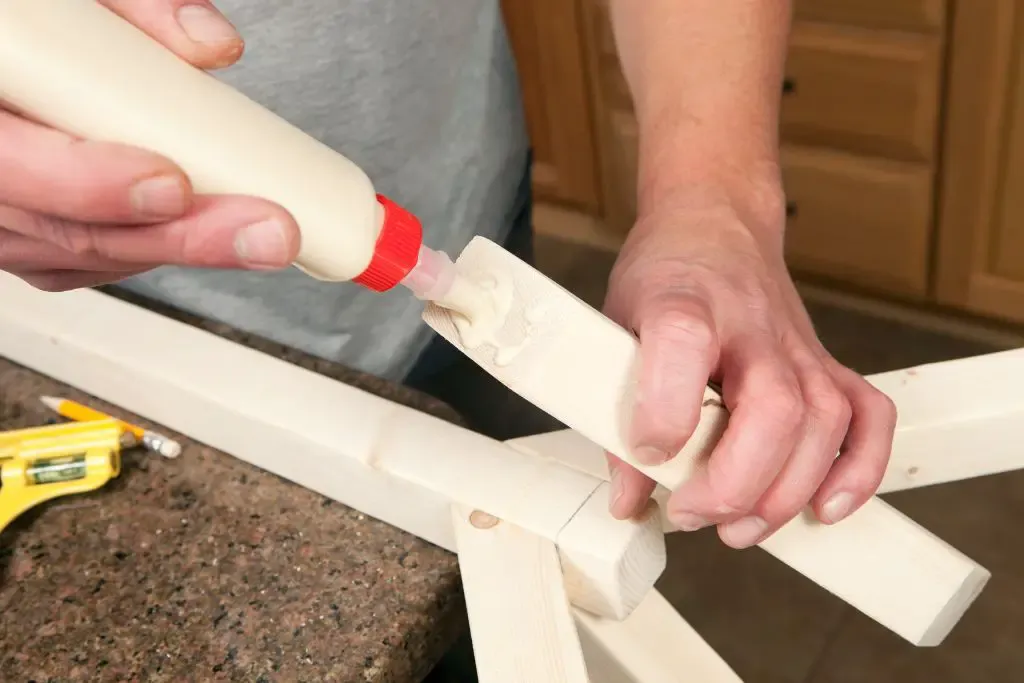
Superglue is a cyanoacrylate adhesive that is clear and solidifies quickly. You can use superglue on various surfaces, such as metals, plastics, and ceramics.
Super glue can hold objects together under very high pressure before the bond breaks.
The bonds formed also do not diminish with time or environmental exposure due to the chemical reaction that occurs when bonding surfaces.
With its many applications, this versatile product remains important in many projects. But does super glue work on wood?
This article will help you understand how super glue works on wood.
Table of Contents
- Super Glue on Wood – Does It Work and How To Use It?
- How Does Super Glue Work?
- Best practices When Using Super Glue On Wood
- When To Use Super Glue For Wood
- Wood Glue or Super Glue – Which One is Better?
- Tips For Using Super Glue On Wood
- Frequently Asked Questions
- How Long Does Super Glue Take To Dry on Wood?
- Does gorilla glue offer more strength compared to superglue?
- What Types of Wood Can get Glued Using Super Glue?
- Is Loctite effective on wood?
- Does Krazy glue adhere to wood?
- Will Super Glue Affect The Finish On Wooden Surfaces?
- Is Super Glue Waterproof?
- Can I Mix Wood Glue With Superglue?
- Will using wood glue affect the natural color of my wood project? What about superglue?
- Can I Stain or Paint Over Superglued Wood?
- Conclusion
Super Glue on Wood – Does It Work and How To Use It?
Super glue can help repair and reattach broken parts on many common wooden items. However, it requires a bit more effort than one would expect.
You need to find a way to get the superglue in the small crevices or holes. Use a toothpick or another small stick to push the superglue in these little crevices and cracks.
You should also note that superglue does not work for every type of wood repair. For example, superglue will not repair structural damage.
How Does Super Glue Work?
Superglue works by undermining the chemical bonds between two surfaces and by breaking down the molecule’s backside into a reactive bond.
These molecules will then react with one another in an exothermic reaction to form a strong, irreversible bond.
On wood, since the surface is porous, the glue penetrates through the fibers and chemically binds them together. You may need more superglue to achieve this, depending on how smooth or porous the surface is.
Best practices When Using Super Glue On Wood
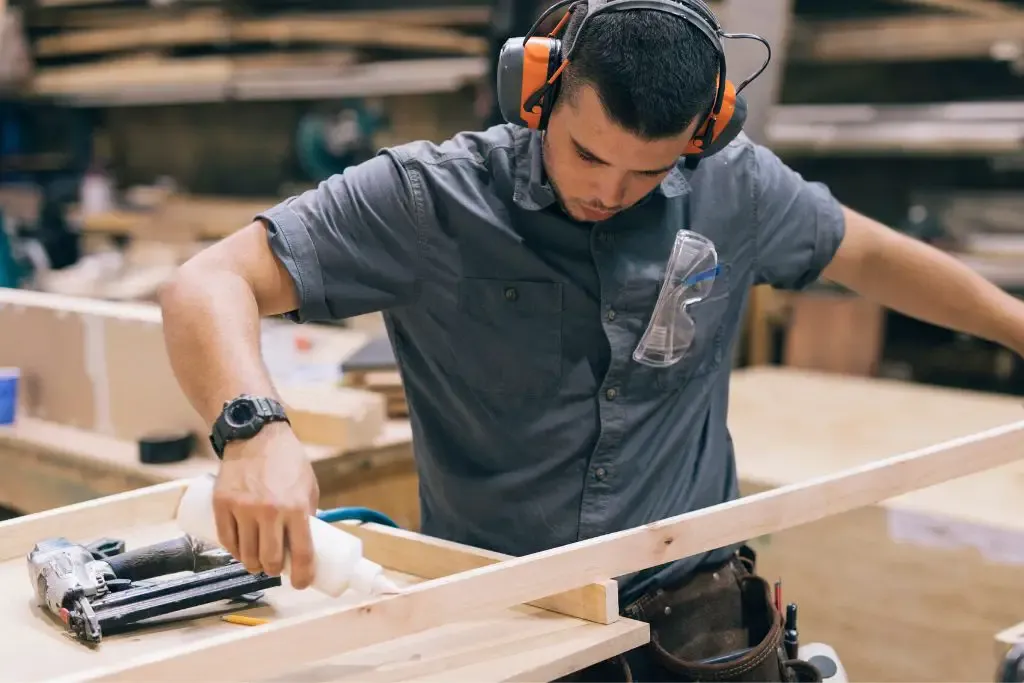
Whenever you are applying glue on wood, the following set of practices can help you realize the best outcome:
1. Invest In A Good Quality Superglue
Get the best-quality superglue you can find. This will ensure that it sticks to most surfaces and strengthens the bond. An inexpensive brand could mean a weak bond between two surfaces.
In addition, buy super glue made especially for bonding wood. A good-quality glue, such as the Gorilla Superglue.
2. Clean The Surface
Ensuring that the surface you are working on is clean is crucial to success. Clean any dirt, grease, or wax off the wood before applying glue to ensure that the glue can stick to it.
3. Ensure Perfect Contact Between The Wood Surfaces
Superglue works best when there is a good amount of contact between the two surfaces you want to bond.
You should note that superglue is very thin in nature and will, therefore, not fill any gaps. If you leave any gaps, the glue will likely seep in and result in a weak bond.
4. Apply A Small Amount Of The Glue
Since this glue is a potent substance, you will want to use it sparingly. Too much superglue can make it hard to get the surfaces lined up correctly, as it can drip or seep into unwanted areas.
Working with too much superglue can also cause clumps, damaging the surface upon application.
5. Find A Good Surface For Adhesion
The most important thing to remember with super glue is that it works best on surfaces that are a bit porous as opposed to very smooth ones.
The surface should also not be excessively rough, as the glue will just seep in. You should find smooth surfaces with a bit of texture, as these will provide a good enough surface for superglue to act on.
6. Apply the Glue to All the Crevices and Holes
You need to make sure that you apply a good amount of glue in all the holes and crevices on your item for a strong bond. This will ensure that you have glued together the entire surface of your item.
7. Apply Pressure and Give The Glue Enough Time To Harden
Super glue works best when you apply pressure to the surfaces you are trying to join. This process should last for at least five minutes for the best outcome.
When To Use Super Glue For Wood
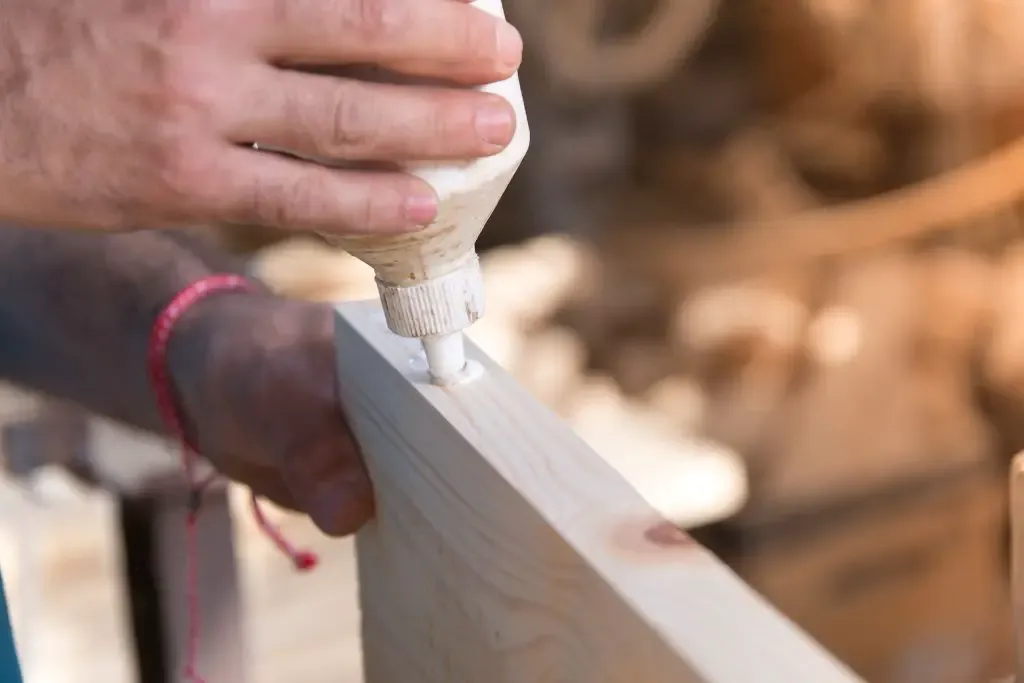
1. Filling Gaps
One of the most common tasks for superglue is to fill gaps such as chippings, grooves, or cracks in a piece of wood.
This glue dries clear. Therefore, it will leave no visible signs of its presence once hardened, so you can use it with confidence.
It’s worth mentioning that superglue alone will not fill gaps as it is not dense enough.
You should mix it with sawdust to create a paste that will easily fill the gap. Afterward, you can apply a wood finish or paint to blend with the rest of the wood.
2. Mending Wooden Objects
Super glue is also very useful for repairing broken items. If a piece of wood detaches from an item, you can use super glue to hold it in place again.
In this instance, the bond will be invisible when the item dries. This will save you from having to screw the item back on. This is also a cleaner way of mending wooden objects, provided that you don’t use excess glue.
3. Assembling Parts
Superglue is a good option if you are looking to assemble many wooden parts. Thanks to its excellent capillary action, it can hold small wooden pieces very well.
When gluing larger items, you may have to use clamps to ensure the pieces remain in place while the glue dries.
4. Creating Waterproof Wood Projects
If you are assembling items you intend to use outdoors, consider using waterproof superglues like Gorilla Glue. This will ensure that the joints of these objects don’t fail when exposed to rain and high humidity.
5. Coating Woodworking Projects
If you are working on a project that you intend to use in a wet and humid environment, consider using superglue as your wood-finishing coat.
This will ensure that the water doesn’t leak into the item. However, this is only economical for small projects.
Wood Glue or Super Glue – Which One is Better?
There is no answer to this question, as wood glue and super glue have unique benefits and drawbacks. On the one hand, wood glue is known for its strong bonding power, making it ideal for projects that require a lot of strength and durability.
On the other hand, superglue is fast-acting and easy to use, making it an excellent choice for smaller projects or quick fixes.
When choosing between wood glue and super glue, it is essential to consider factors such as cost, ease of use, and depending on your specific projects.
Tips For Using Super Glue On Wood
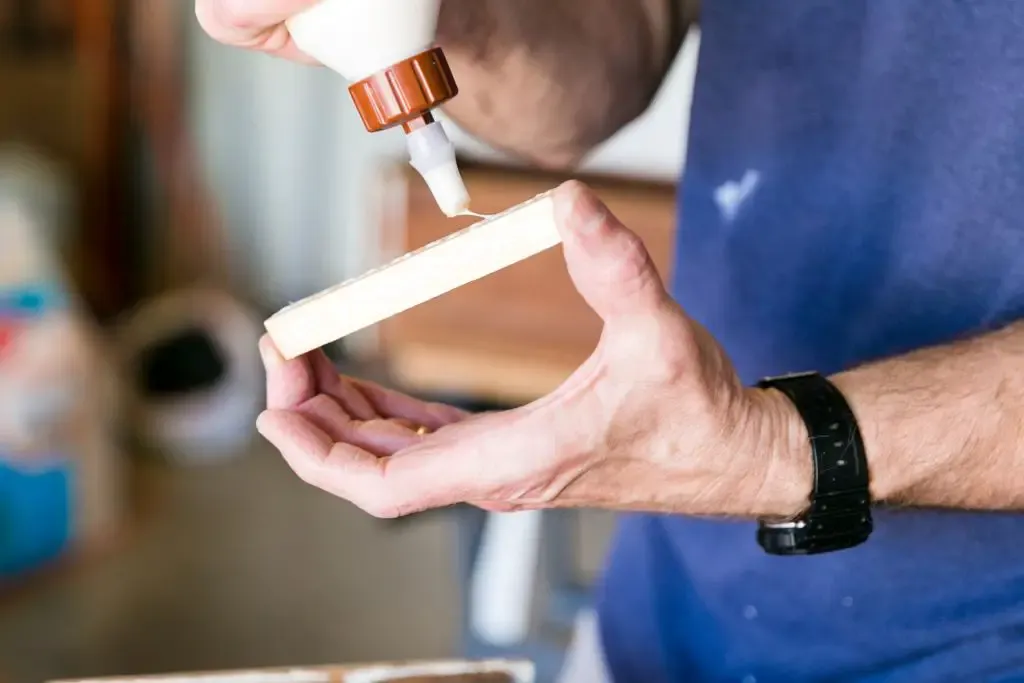
Super Glue is a powerful adhesive, but it can be tricky to use correctly.
Here are a few tips for getting the most out of your Super Glue and avoiding common mistakes:
- Always make sure to use high-quality super glue that is specifically for wood projects. This will ensure that it bonds strongly and effectively with your wood surface.
- Before applying the super glue, carefully sand the edges of your wood pieces to remove any roughness or imperfections. This will help create a smooth, strong bond.
- Apply a small amount of glue to one side of your wood piece, and press it firmly into place on the other surface. Hold the pieces together for at least 30 seconds to give the glue time to set up correctly.
- If you need to reposition your piece after applying the Super Glue, wait for the glue to set up completely before attempting to move it. This can take anywhere from a few minutes to an hour, depending on the type of Super Glue you are using.
- If your project requires multiple pieces of wood, apply Super Glue to each surface and hold them together until they are fully set up. This will ensure a strong, long-lasting bond between all of your pieces.
- If you are working on a large or complex project, using clamps or other tools to hold the wood together while the glue sets up may be helpful. This can help prevent slippage and ensure that your finished project looks great.
Overall, with the proper preparation and care, Super Glue can be a valuable tool for any woodworker looking to create stunning, durable projects.
Frequently Asked Questions
How Long Does Super Glue Take To Dry on Wood?
Different types of superglues have different drying times. Generally, super glues will take only a few seconds to dry. The viscosity of the glue is also a factor. Gel superglue, for example, takes as long as five minutes to dry.
Please note that while it only takes a few seconds to dry, you should allow at least 24 hours of cure time. This ensures that the bond is strong enough and will not break off while using the item.
Does gorilla glue offer more strength compared to superglue?
Gorilla glues are regarded as more rigid than superglues because they are manufactured from a polyurethane mix, while regular superglue is made from cyanoacrylates. The former is more durable, giving a stronger finish.
What Types of Wood Can get Glued Using Super Glue?
Super Glue can help to glue most types of wood together. However, it is not recommended for use on unsealed wood or wood that is still wet.
Is Loctite effective on wood?
Yes! Loctite is a high-end adhesive that works with all types of wood construction projects, whether interior or exterior. Moreover, it has a less smell formula, and you can easily clean it up with water.
Does Krazy glue adhere to wood?
Yes, Krazy Glue is among the fastest-setting adhesives available today. The glue adheres to all wood types and is sandable. This makes it suitable for the majority of wood projects.
Will Super Glue Affect The Finish On Wooden Surfaces?
Some types of Super Glue can affect the finish on wood, especially if they are left in place for too long or applied in a thick layer.
To minimize this risk, it is essential to use a thin layer of Super Glue and only leave it in place for the recommended time.
In addition, lightly sand or apply some additional finish after the Super Glue dries.
Is Super Glue Waterproof?
No, many types of super glue are not waterproof and most common glues dry out on wood because water can get to the bond.
If you look carefully at the bottle, there will be a number after the “cyanoacrylate.” This is a rating for how resistant it is to moisture. The higher the number, the more waterproof it is.
This rating is from 1 to 4, where 4 is waterproof. The number one Super glue is not waterproof. If you want waterproof glue, you must look for a different type.
Can I Mix Wood Glue With Superglue?
It is not recommended! Wood glue and superglue have optimal uses. Therefore, using them together might create issues instead of helping things.
Will using wood glue affect the natural color of my wood project? What about superglue?
Wood glue usually won’t discolor raw or unfinished wood. However, high-quality stainable wood glues may slightly darken light-colored woods when used.
Superglue can add sheen or glossiness to finished wood surfaces without changing their natural color.
Can I Stain or Paint Over Superglued Wood?
Once the glue has dried completely, you can stain or paint over superglued wood. Just make sure you sand down the area first so that the paint or stain will adhere properly.
Conclusion
Super glue can work on wood if used correctly. It works best on surfaces that is dry and clean
When using super glue on wood, it is essential to know the type of wood and the finish. Sanding the surface before gluing will help create a better bond.
Be sure to test the adhesive on a small area before proceeding with the repair. However, super glue is the way to go if you need a strong adhesive for metal, plastic, or other non-porous surfaces.

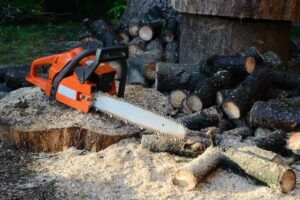

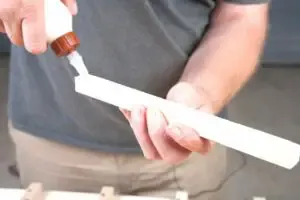

![9 Best Pole Saws of 2023 [Ultimate Guide] 9 Best Pole Saws of 2023 [Ultimate Guide]](https://handykeen.b-cdn.net/wp-content/uploads/2021/03/best-pole-saw-300x200.jpg)
